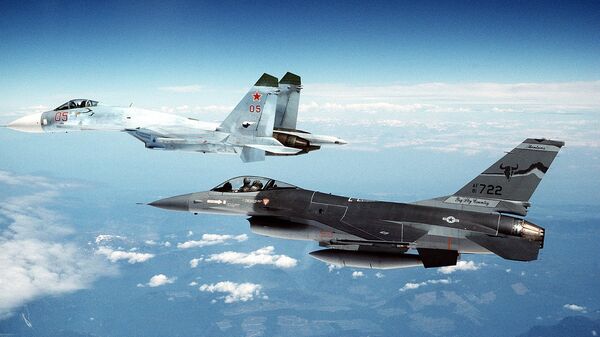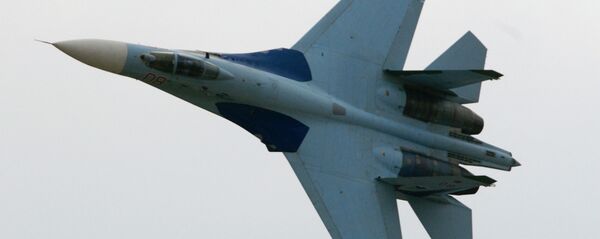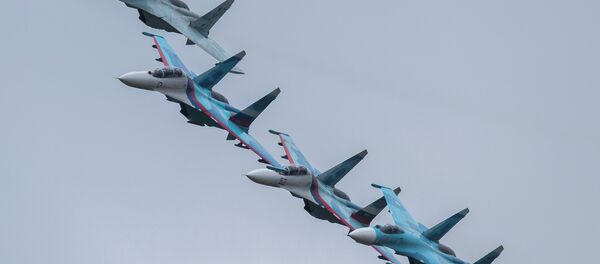On Wednesday a Sputnik correspondent reported that a NATO F-16 supersonic multirole fighter had made an attempt to approach Russian Defense Minister Sergei Shoigu's plane over neutral Baltic waters but then retreated when it was chased away by a Russian Sukhoi Su-27 fighter jet.
Speaking to Sputnik, Russian experts share their views on the incident and its potential implications.
Boris Rozhin, military observer and editor-in-chief of the Kassad information-analytical center, believes that the F-16's dangerous maneuver could be considered an unfriendly signal on the part of NATO and the US.
"The flights over the Baltic along Russia's borders are intended, first, to show that NATO is interested in the affairs related to our [Russian] armed forces and that it is trying to identify areas where Russian troops are concentrated, as well as air force and naval activity. This is standard intelligence work that is being conducted by [NATO]. Of course, it is directed against Russia," Rozhin told Radio Sputnik.
"These [incidents] show that the US and NATO are not interested in the normalization of relations with Russia and that they continue to support the so-called escalation trend," he said.
Earlier this week, Russia scrambled its Su-27 fighter to intercept a target over neutral Baltic Sea waters, which turned out to be a US Boeing RC-135 reconnaissance aircraft.
According to the Russian Defense Ministry, over the past week, the US and NATO reconnaissance aircraft have carried out more than 15 flights over the Baltics in close proximity to the Russian border.
On June 6, the Ministry said it scrambled a Su-27 fighter over the Baltics in order to intercept and escort a US B-52 strategic bomber that had approached Russia's borders.
For his part, former Commander-in-Chief of the Russian Air Forces Pyotr Deinekin praised the actions of the pilot of the Sukhoi Su-27 who got in the way of the NATO F-16 fighter.
However, Deinekin noted that the NATO jet approached the Shoigu aircraft within the permissible limits.
"Each of the pilots was performing his military duty," Deinekin told Sputnik, "The fact that our [Russian] pilot managed to maneuver in such a way that the aircraft F-16 had to halt its task, deserves respect. As for the [F-16]…, he apparently wanted to find out… whether it was a passenger or a military plane and why it was accompanied by a Russian fighter jet. Both [pilots] acted within the established norms and regulations."
"Neutral waters are neutral waters. We [Russian Air Forces] also perform flights to the shores of America — we fulfill our own tasks. The main thing is to maintain discipline, restraint and not violate the laws of flight over neutral waters," the former commander-in-chief underscored.
Commenting on the possible implications of the recent air incident, Rozhin said that it is unlikely that it will "make a great impression on the Kremlin."
"Most likely, this will lead to symmetrical and asymmetric responses [on the part of Russia] in the West. Perhaps, the upcoming exercises of the USA and NATO in the Baltic will be accompanied by a large number of Russian reconnaissance aircraft," Rozhin suggested.



